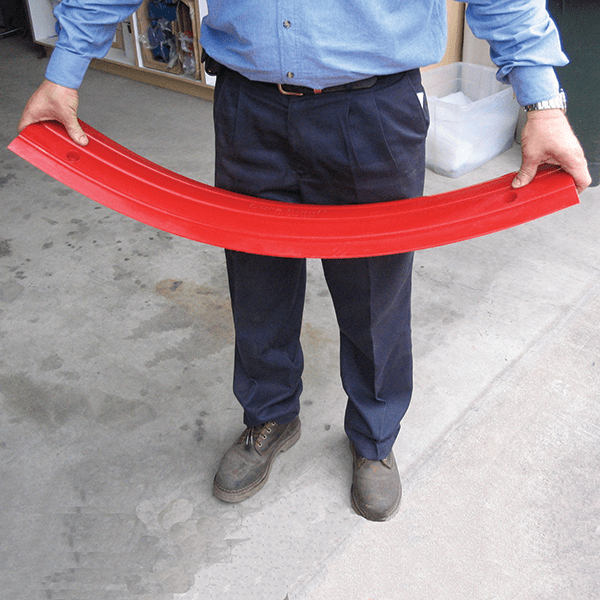How to Install your Rubber Floor Bunding for Maximum Effectiveness

Whether you’re taking on commercial projects or building a private driveway, building or whatnot, the most important thing that you should keep in mind is that when you construct floor areas and pavements that your company would you, they should be made in a way that it is made to last.
The construction of your driveways, buildings, storage areas and even your company’s parking lots are generally a one-time thing and the ideal setting would be for it to never break, able to withstand heat, pressure and other risks — such as spills.
Luckily, to help maintain the integrity of these permanent installations, rubber floor bunding was created! This innovative reinforcement allows you to install leak-proof high-grade materials that helps ground areas remain dry and contain any spill that may occur in the general area
RELATED ARTICLE: CHEMICAL BUNDING ESSENTIALS: A COMPREHENSIVE GUIDE TO CONTAINMENT
What is a Rubber Floor Bunding?
Rubber floor bunding is a versatile and durable barrier made from materials like synthetic rubber or PVC. Its primary purpose is to contain spills, prevent damage to surfaces, improve safety by reducing slip hazards, and help maintain cleanliness in work environments. By creating a physical barrier between different areas or containing hazardous materials, rubber floor bunding contributes significantly to maintaining a safe and compliant workspace.
By acting as a barrier, it helps the general area remain safe. But how do we make sure that as we install the rubber floor bunding, that it does its job?
Proper preparation of the installation site is crucial for ensuring a successful and durable installation, maximising the effectiveness for your company. Start by cleaning the area where the rubber floor bunding will be installed, removing any debris, oil, or other contaminants that could hinder adhesion or create uneven surfaces. Ensure that the floor is dry and free from any obstructions that may interfere with the installation process.
Proper Installation of a Rubber Floor Bunding
Step 1. Measure and Mark
Begin by measuring the area where the bunding will be installed and mark the boundaries accordingly. Ensure that the bunding covers the desired area effectively to provide comprehensive spill containment.
Step 2. Adhesive Application
Depending on the type of rubber floor bunding you’re using, apply an appropriate adhesive to the bottom surface or use interlocking sections for secure attachment to the floor. Follow the manufacturer’s guidelines for adhesive application and curing times to achieve optimal bonding strength.
Step 3. Seal Joints and Corners
To create a seamless and watertight barrier, pay special attention to sealing joints and corners where multiple sections of bunding meet. Use recommended sealants or adhesives to prevent leaks and ensure the integrity of the containment system.
Step 4. Allow Curing Time
After installing the rubber floor bunding and sealing joints, allow sufficient curing time as per manufacturer recommendations before subjecting the bunding to use. This curing period allows the adhesive to set properly, ensuring a durable and effective bond with the floor surface.
Step 5. Regular Maintenance
Maintaining your rubber floor bunding is essential to prolong its effectiveness and durability. Implement a regular maintenance schedule that includes the following tasks:
Keep the rubber floor bunding clean and free from debris to prevent obstructions or contaminants that could compromise its effectiveness. Use mild detergents or cleaning solutions as recommended by the manufacturer.
Overall, it is clear that the proper installation of rubber floor bunding is essential for creating effective spill containment barriers, protecting surfaces, and enhancing safety in various environments. It makes sure that your rubber floor bunding actually does its job — making your money’s worth.
By following the guidelines outlined in our guide right here and making sure you apply it before you finish construction, you can maximise its effectiveness and longevity. Regular maintenance and inspections will further contribute to the ongoing performance and reliability of your rubber floor bunding system!
READ NEXT: 5 KEY TYPES OF ABSORBENT MATS
Need Experts in Rubber Floor Bunding Installations?
Our variety of rubber floor bundings over at Ecospill gives you the option of protecting your floorspace and pavement in a cost-effective and efficient way! Our expert team is able to help you choose what is best for your company and install it for you as well!
Visit our website to see more products we offer, or contact our team for a spill kit servicing. Enhance the safety of your organisation without compromising your obligations to our environment with Ecospill!
